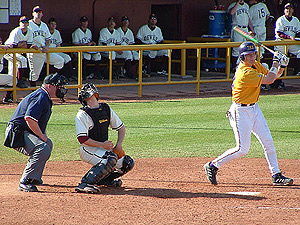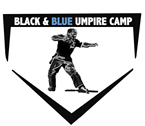| Home |
| Ball Stays in Infield |
| Fly Ball to Outfield |
| Batted Ball to Outfield |
| Everything Else |
| PreGame Guide |
| Study Guide |
| Resources and Links |
Site Maintained by: DataBase Management Services |
| Introduction | This section covers all the other things that may occur during a baseball game for which umpires have to cover. The bottom line on these situations is situation and partner awareness.
Working as a crew of "one" instead of three umpires working individually will minimize problems that can mess up the game, thus not having bases or situations covered leading to arguments and/or ejections. |
|---|---|
| Run Downs | When a run down occurs three-umpire mechanics usually allows two umpires to immediately cover the run down as they will have the runner "boxed in". The two umpires should use a inside/outside coverage of the runner:
This allows the umpires a better view of tags, interference and obstruction. Although on fly ball coverage the umpire that goes out is suppose to stay out, he can (if possible) come back in and help with a run down just like the plate umpire in two-umpire mechanics moving in to help as the runner is going away from him. Communicate to the other umpire, "Fred, I'm in!" Example
Even though this is a straight pick-off, had the runner got into a run-down both umpires would have had him boxed in. |
| Foul Ball Coverage | When a pop-up in foul territory occurs between home and the bases, the plate umpire and the "wing" umpire on that side of the field can dual cover the play.
The umpire not covering the pop-up should be partner aware by covering any tag-up situations and back picks that may occur on the bases. Foul fly balls down the line the "wing" umpire should look at their respective baseman and let him clear you, then follow him covering the play. If there is no "wing" umpire on that line, then the plate umpire will cover the play. The umpire on that side of the diamond should be partner aware and be ready to assist the plate umpire on the play. The umpire not covering the foul fly ball down the line should be partner aware by covering any tag-up situations and back picks that may occur on the bases. Plate Umpire Pop-up Coverage Example
 This umpire is doing exactly what he should be doing, which is reading the catcher. Everybody in this picture is looking at the ball, but not the umpire. The reason behind this is that the catcher has to catch the ball not the umpire. The umpire must get out of the catchers way by reading the direction of the catcher and "opening the gate". Opening the gate is term used to allow players to get by and field a baseball. This umpire is doing exactly what he should be doing, which is reading the catcher. Everybody in this picture is looking at the ball, but not the umpire. The reason behind this is that the catcher has to catch the ball not the umpire. The umpire must get out of the catchers way by reading the direction of the catcher and "opening the gate". Opening the gate is term used to allow players to get by and field a baseball.
|
| Balk Coverage | With having an umpire at 1st base with a runner at 1st base helps with balk coverage, especially those tricky lefties. Plate Umpire should cover balks by the pitcher:
1st Base Umpire should cover balks by the pitcher:
3rd Base Umpire should cover balks by the pitcher:
Remember:
When a balk is called the other umpires should echo the balk. If there is a question from the defensive manager about the balk, the umpire that made the initial call must step up and explain his ruling. Balk Rule Videos
|
| Overthrows | All overthrows will be taken by the plate umpire with the exectpion of when the crew has rotated and that responsibility will revert to the 1st base umpire who has rotated to the plate.
The other umpire on the side of the field where the ball goes out of play should be ready to assist the plate umpire (or 1st base umpire who has rotated to home) with the overthrow. |
| Check Swings | Check swing responsibilities and mechanics:
Example
|
Top of Page
